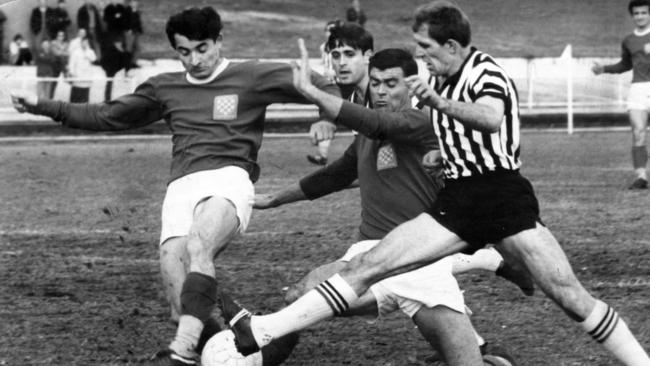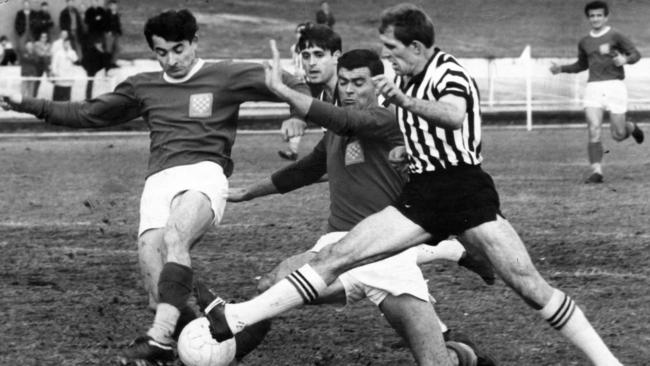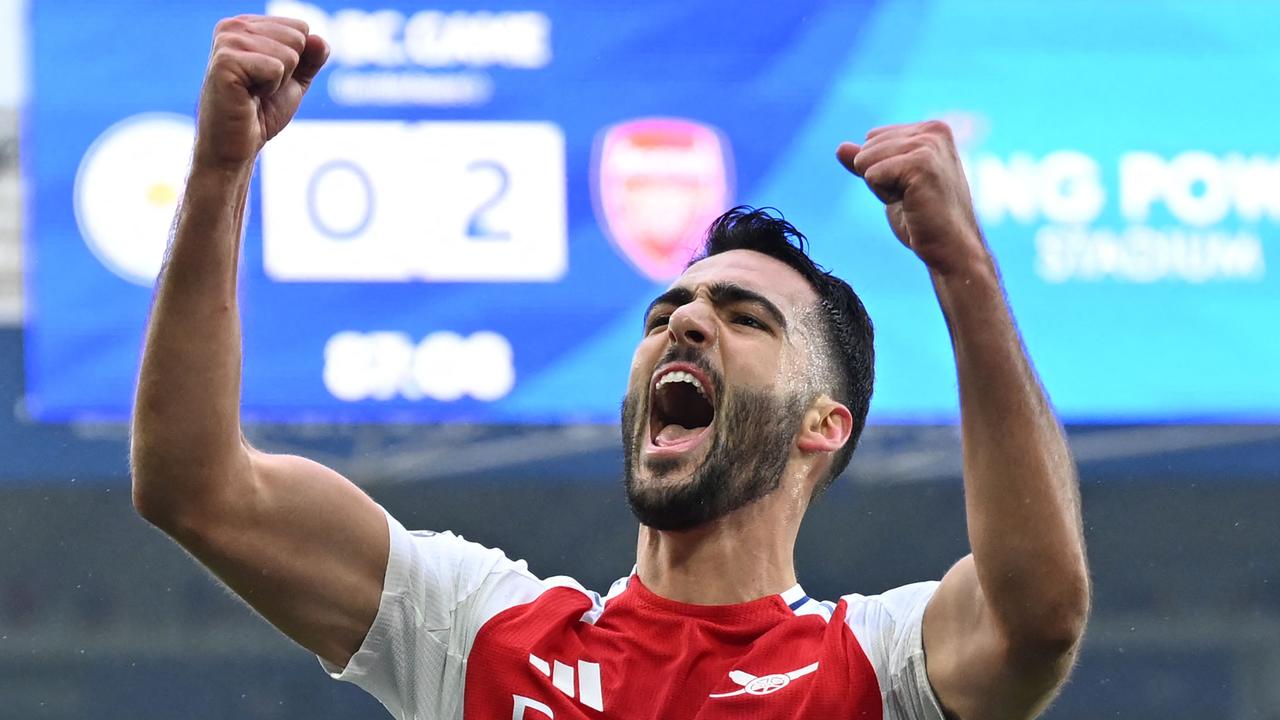Steve Herczeg: South Australia’s forgotten Socceroo
IN 1965 Steve Herczeg became the cornerstone for South Australian soccer when representing the Socceroos in the nation’s second ever FIFA World Cup qualifier.

Football
Don't miss out on the headlines from Football. Followed categories will be added to My News.
IN 1965 Steve Herczeg became the cornerstone for South Australian soccer when representing the Socceroos in the nation’s second ever FIFA World Cup qualifier.
Now he’s almost the forgotten Socceroo after making history for SA earning 60 pounds — the Australian currency of the day — for a six-week Socceroos camp.
More than 50 years later, Herczeg, 71, has unwittingly influenced generations of South Australians who harbour national-team ambitions, even though he played in an era before the Socceroos nickname was born.
With the Socceroos in town to face Tajikistan in a 2018 FIFA World Cup qualifier, Herczeg was modestly proud that all his hard work and sacrifice to represent Australia all those years ago has made the pathway to Australian soccer somewhat easier than what he was put through in 1965.
Herczeg earned his call up when former coach Tiko Jelisavcic liked what he saw from the attacker.
The 20-man squad faced North Korea, in a two-legged series for a place at the 1966 World Cup in England, in Cambodia in front of 55,000 and 60,000 fans.
The two nations were vying for the 16th and final spot in England. Australia lost down 2-9 on aggregate in its first attempt to qualify for a World Cup.
“South Korea and North Korea were at war at the time,’’ Herczeg, who was born in Hungary, said.
“I remember seeing 20,000 troops at the stadium, there was a revolution going on and you could hear the sound of gunfire going on.
“We played the games and made a quick exit out of there, it was far too dangerous.”
Ryan McGowan, SA’s only current Socceroo squad member, met Herczeg for the first time yesterday.
“Without Socceroos like Steve and what they did in the 1950s and 1960s they really did everything for only the love of the game and what they sacrificed has helped us become a professional footballing nation,’’ McGowan said.
“The current Socceroos will never forget the people that were before us and what they went through.”

Football Federation Australia handed Herczeg Socceroos cap No. 177 after the only memorabilia of his Australian days — his tracksuit — was stolen in the Adelaide Polonia changerooms while he was playing for Adelaide Juventus in the late 1960s at Croydon Park.
After arriving in Adelaide as a five-year old in 1951, Herzceg’s family was ushered to a Woodside migrant hostel before settling in suburban Adelaide with his family.
He first kicked a ball in the streets of Adelaide before joining Orange-Sturt’s juniors.
He got his first team break at Budapest as a 16-year-old then signed for (Adelaide) Croatia before Adelaide Juventus made him an offer too good to refuse.
He cost Juventus a then-Australian transfer record 1500 pounds.
But his national team call-up came as a huge surprise despite Herczeg’s goals in the SA state league.
“I got a telegram telling me I had been picked to play for Australia,’’ he said.
“I had to take time off work and came to an agreement that my job would be safe once I came back from duty — I was working for TNT back then.
“But I played until 1981 and that was for Croydon Park in the amateurs and I still like the game but rarely get to see it live anymore.”
Herczeg made two appearances for Australia after the side was summoned to a camp in Cairns before the World Cup qualifiers in Cambodia.
He replaced Socceroos legend Johnny Warren in his second Australian appearance, a 3-1 win over Taiwan in Hong Kong in December, 1965.
Herczeg also represented South Australia 15 times.


